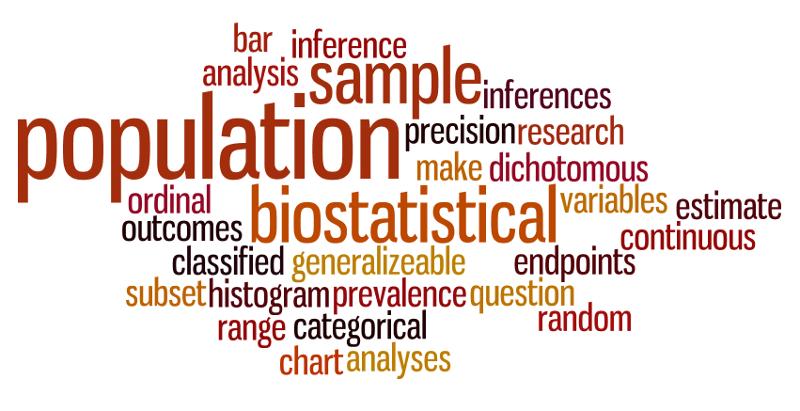Author:
Lisa Sullivan, PhD, Professor of Biostatistics, Boston University School of Public Health

Introduction
Biostatistics is the application of statistical principles to questions and problems in medicine, public health or biology. One can imagine that it might be of interest to characterize a given population (e.g., adults in Boston or all children in the United States) with respect to the proportion of subjects who are overweight or the proportion who have asthma, and it would also be important to estimate the magnitude of these problems over time or perhaps in different locations. In other circumstances in would be important to make comparisons among groups of subjects in order to determine whether certain behaviors (e.g., smoking, exercise, etc.) are associated with a greater risk of certain health outcomes. It would, of course, be impossible to answer all such questions by collecting information (data) from all subjects in the populations of interest. A more realistic approach is to study samples or subsets of a population. The discipline of biostatistics provides tools and techniques for collecting data and then summarizing, analyzing, and interpreting it. If the samples one takes are representative of the population of interest, they will provide good estimates regarding the population overall. Consequently, in biostatistics one analyzes samples in order to make inferences about the population. This module introduces fundamental concepts and definitions for biostatistics.
Learning Objectives
After completing this module, the student will be able to:
- Define and distinguish between populations and samples.
- Define and distinguish between population parameters and sample statistics.
- Compute a sample mean, sample variance, and sample standard deviation.
- Compute a population mean, population variance, and population standard deviation.
- Explain what is meant by statistical inference.
-----------



